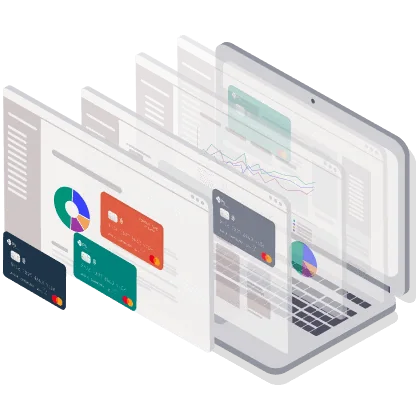Virtual card: Definition, advantages and solutions
The virtual card, an indispensable new tool for media agencies
Today, the digital card has established itself in the banking world, especially among neo-banks, as the most fashionable means of payment. The increase in fraud on card payment transactions, which jumped 13.4% in 2018 alone, no doubt has something to do with it. Individuals and businesses alike have been won over by this new trend, which offers much more than just a payment card…
What is an e-card: definition
An e-card can offer a variety of functions, but its main advantage is that it is dematerialised. Like a conventional payment card, it has a PAN code, a CVV code and an expiry date, but no physical representation. It will be displayed on a digital screen (cell phone, computer or tablet) via secure access. This makes it the ideal means of payment for online purchases. Inexpensive (because it doesn’t need to be manufactured), it has the advantage of being issued in real time (no delays or postal charges), and helps secure online transactions by preventing fraud, hacking, loss or theft. By definition, the virtual card is digital and designed for online purchases, but it can also offer more services. These cards can be :
– Prepaid: they can be loaded or unloaded in any amount without the possibility of overdraft or credit, for cash payments only.
– Single-use: issued for a specific purchase and amount, they deactivate once the purchase process is complete. A new card will be issued for the following purchase
– With a dynamic code: they offer a CVV (Cardholder Verification Value) or Cryptogram security code that is renewed with each purchase, providing the user with a very high level of security, particularly against hacking.
Over and above the obvious advantages for private individuals in securing their purchases on the Internet, companies, and advertising agencies in particular, are finding it increasingly attractive: the immediacy of the service, its unlimited (or almost unlimited) nature, and its ability to streamline professional spending processes. Virtual cards are increasingly used in the advertising sector, particularly in media buying (i.e. the purchase of advertising space on social networks, for example). Advertising agencies that handle thousands of online transactions every day are faced with a number of recurring problems:
– Pay by card for regular, often large-value expenses
– Multiply payment methods according to the number of campaigns or customers
– Juggling campaign suspensions (and therefore payment card suspensions) following the blocking of administrator accounts (often arbitrarily decided by the media)
– Promote independence and flexibility of accounts according to periods, media and advertising budgets
There are several reasons why issuing prepaid virtual cards is the best solution:
– Real-time issuance of digital cards at will: for unforeseen events, emergencies and greater flexibility
– Instant loading and unloading of cards: the company remains in control of its budget, with granular control over every expense
– Autonomous management of virtual cards and accounts: the company is free to manage its transfers and is not dependent on its bank.
– Total and immediate visibility of transactions: for better accounting, administrative and budgetary monitoring
– Choice of currencies: the company is free to choose cards and accounts in the currency of its choice (e.g. EURO, USD, GBP), thus avoiding exchange rates.
– Low costs
In a world where payment and its various methods are increasingly dematerialised, the digital card is emerging as an inexpensive, secure solution for the future, enabling better management of business expenses. That’s why so many agencies and advertising sales houses now call on Programme Managers like E-Pay Space to develop customised offers tailored to their needs.
E-wallets vs virtual cards: what’s the difference?
E-Wallet
E-payment or e-pay
Would you like to find out more about our solutions?
Custom-built or ready-to-use, we’ve got the solution you need!
